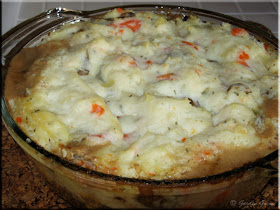A few weeks ago I found a 1 - inch long tan coloured threaded connector by the counter kick plate. I set it aside figuring it was important and we would soon find out which appliance it belonged to. It turns out it was too the deep fryer. The part would no longer stay on either causing the inner fryer compartment to be quite loose. My husband declared the fryer unsafe so it was time to look for a new fryer. This time I really knew what I didn't want in a fryer!
 T-FAL® Deep Fryer
T-FAL® Deep FryerLast Christmas we gifted parents of oldest grandbaby with a T-FAL® deep fryer. They had done the research and were very specific that was the fryer they wanted. They were telling us how pleased they were with the fryer. They made buttermilk fried chicken using the fryer when we visited last. I saw how the fryer worked and asked a lot of questions. My mind was made up, so it was just a matter of waiting for a sale. In the end, Canadian Tire had the fryer on sale so we sacrificed all of our Canadian Tire money so actual money spent was $22 CDN. Pictured is my new T-FAL® Ultimate EZ Clean Deep Fryer.
The fryer has a lot of nice features. It has a large capacity (1.2 kg) two position basket. The lid contains a permanent odor filter and viewing window for splatter free cooking. The adjustable thermostat is graded in both Fahrenheit and Celsius. Unlike other deep fryers the 1700 W ultra quick heating element is immersed directly into the oil. Cost to operate at our electric rates is 20¢ per hour. The frying bowl, lid and fryer basket are dishwasher safe for easy washing after each use so there should be no gunky build-up. The real selling feature was the automatic oil filtration system that drains the oil through a filter once it is cool enough into a storage oil box. The oil box can be stored in the fryer or refrigerator.
 Fresh Cut Fries
Fresh Cut FriesWhen testing out a new small kitchen appliance always test it against something you know what the outcome should be. We decided to test out the new fryer by making fresh cut fries. The fryer came with a bonus French fry cutter but we already had one so put the bonus one away as a spare. It took 3 L of 100% vegetable oil to get to the correct oil level. The oil was and still is on sale for $3.99 for the next week which is a $2 savings per jug so we will be stocking up.
I really like that this deep fryer has actual temperatures on the thermostat. The old deep fryer had pictures but no temperatures making it difficult to judge the frying temperature for other foods. True to its word there was no splattering. The fryer heated faster and the cook time was a couple minutes shorter than the old fryer as well. In terms of cost savings this is less than a penny but as part of the Every kW Counts it means we used less electricity to get the same results! As you can see the fryer did a lovely job of frying the fresh cut fries.
When we were finished frying, we set the fryer to auto-filter. I don't think it was a full 3 hours before the oil was filtered into the oil box. I dismantled the fryer and washed the parts by hand simply because I was already washing a few other things. I like the idea that the parts are dishwasher safe. Tonight's test will be ...!


 Rustic Cottage Pie
Rustic Cottage Pie
 Buttermilk Fried Chicken
Buttermilk Fried Chicken The Beef
The Beef The Abattoir
The Abattoir Pork Chops
Pork Chops Chicken Medallions
Chicken Medallions CounterCraft Grill
CounterCraft Grill Round Steak
Round Steak Tzatziki
Tzatziki Avocado Salad
Avocado Salad Ham with Diana Sauce
Ham with Diana Sauce Ham Dinner
Ham Dinner Chicken Lettuce Tomato Pita Wrap
Chicken Lettuce Tomato Pita Wrap New York Strip Steak
New York Strip Steak Diana Sauce
Diana Sauce Canning Chicken Stock
Canning Chicken Stock Radiant Cartridge
Radiant Cartridge Panfried Perch
Panfried Perch